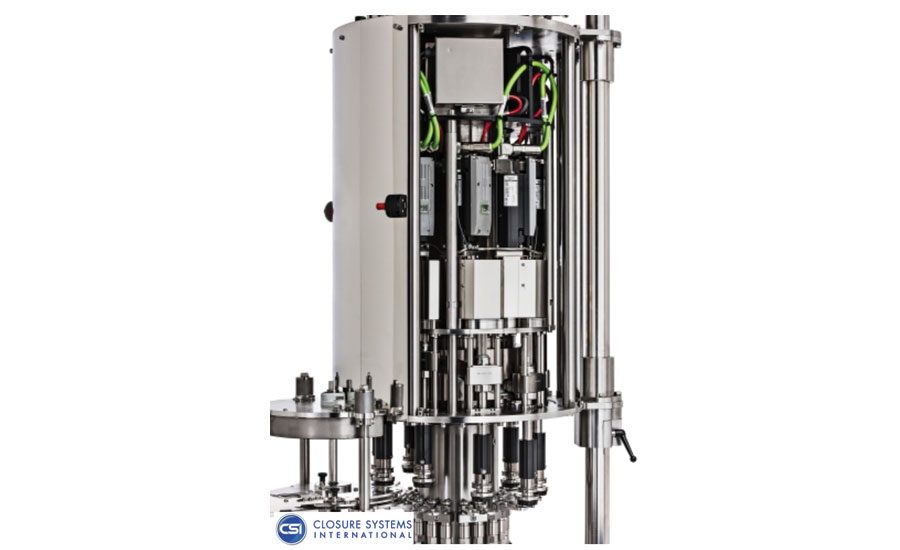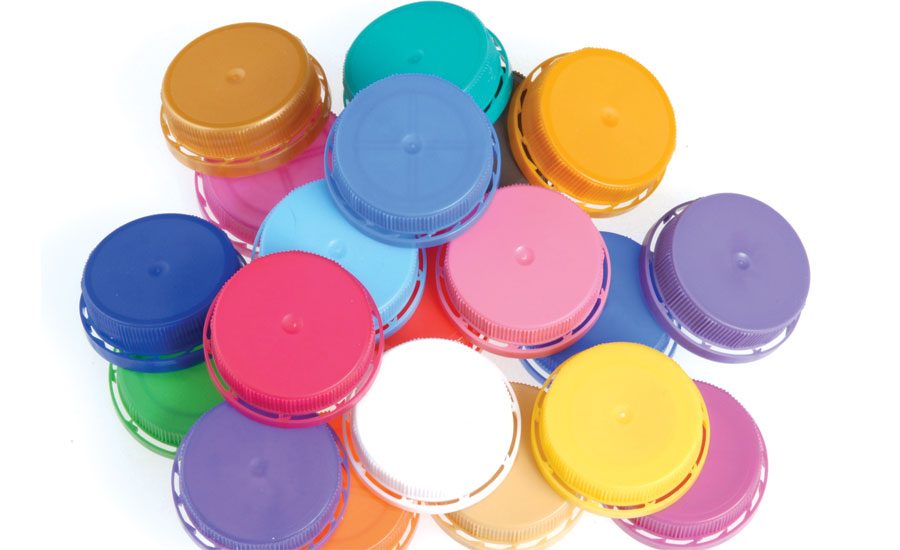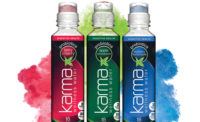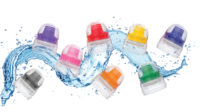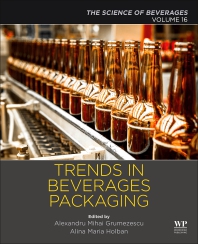Regardless of a beverage's content or packaging, a plastic or metal cap or closure is necessary to keep the packaging spill-proof and contents fresh. Thus, beverage-makers are committed to giving consumers caps that are easy to open, tamper-resistant and biodegradable while still communicating the brand’s identity by using a variety of colors, shapes and graphics.
Indianapolis-based Closure System International’s (CSI) Global Marketing Services Manager Jane Haywood-Rollins notes that a handful of macro trends that are contingent on diverse demographics and changing lifestyles are influencing consumer purchasing decisions. “The world’s population of people 60 years of age and older is growing,” she says “…This demographic group is often faced with economic and health-related challenges that packaging and beverage companies should address.
“On the other hand, more than half of the world’s population is under the age of 25,” she continues. “This generation (millennials) is globally oriented, extremely diverse, technologically brilliant, open to change and self-expressive. …Children also have their own set of needs when it comes to marketing and packaging development.”
Mobility and convenience also play a role for active, on-the-go consumers. “Consumers around the world continue to live active, mobile lifestyles where the ability to drink while mobile plays an important role in their decision-making process,” says Jean-Marc Philbois, global market development president at Aptar Food + Beverage, Crystal Lake, Ill. “This is why Aptar focuses on supplying innovative, lightweight and differentiated sport closures that allow convenient consumption on-the-go.”
Although World Bottling Cap LLC President and Chief Executive Officer Abe Frishman says there haven’t been many major changes since the first metal caps and closures were invented and patented more than 120 years ago, consumers, bottlers and brand owners always are seeking innovation. The Plano, Texas-based company offers its patented Easy Pull Bottle Cap (EPBC). “[It provides] the convenience to open the bottle anywhere, anytime and without the need of an opener,” Frishman says.
Pittsford, N.Y.-based KarmaCap Co. Chief Executive Officer CJ Rapp notes that consumers also are demanding products that deliver on their promises. “We couldn’t find a stock dispensing cap that was both technically sound and user-friendly, and, until the Karma Push Cap, none of them delivered a truly hermetic seal to protect the content inside,” Rapp says. “…The ability to ship unstable ingredients separately, but simultaneously, opens a world of opportunities. It allows the consumer to mix the ingredients just seconds before consumption.”
Keeping consumers safe also is important. Tamper-resistant solutions from Blackhawk Molding Co. Inc., Addison, Ill., use stiffer material to improve the ease-of-opening and the audible snap of the temper-evident rings used in the dairy, water and juice industries. “Blackhawk has improved the ease of our tear strips…and introduced fresh-seal and fresh-strip to enhance freshness and tamper evidency,” says Blackhawk General Manager Dale Berg. “Along with its distinguishing look on the shelves, the LT cap reduces the amount of materials for production and shipping. It enables us to use less plastic, which makes it an environmentally friendly cap.”
Sustainable impact
Packaging material experts note that recyclability and a decreased carbon footprint are priorities for both beverage-makers and consumers. “Metal closures are 100 percent recyclable,” says Sheila Heath, director of marketing for Crown Cork & Seal USA Inc., Philadelphia.
KarmaCap’s Rapp also notes the sustainable qualities of the company’s patented cap. “There is just one material on a Karma Push Cap — as opposed to use of two or more dissimilar materials,” he explains. “The cap is made of low-density polyethylene, which is fully recyclable.”
CSI’s Haywood-Rollins notes that caps and closures have gotten lighter in weight to address both cost reduction and environmental trends. “CSI has made it our mission to combine closure/bottle finish lightweighting with advanced performance,” she says. “This includes source reduction as well as reduced energy consumption in our plants and for our customers.
“Since CSI designs and manufactures both closures and capping equipment, we have technical service experts who are uniquely qualified to assist bottlers in optimizing operational efficiency, resulting in less scrap and more energy conservation,” she continues. “Also exciting is that closures now offer more than just their basic function — they offer personalization, instant gratification and connectivity.”
As beverage packaging has gotten more sophisticated, beverage-makers also are looking for innovation when it comes to “sealing the deal,” experts say. Affordability, reliability, quality and marketability are crucial, they add.
Standing out on the shelf
A beverages’ packaging and closure needs to enhance consumer satisfaction, while maximizing profits for stakeholders in the value chain, CSI’s Haywood-Rollins says. “Brand owners need to be able to more effectively use packaging and closures as a marketing tool,” she says. “Caps and closures must offer shelf differentiation, enhance functionality and allow for unique brand identity.”
Blackhawks’ Berg echoes similar thoughts: “Beverage-makers are looking for something that stands out in the marketplace, something that differentiates their package. Our two-colored flip-top cap is ideal,” he says. “We offer four 38 [millimeter] (mm) closure variations — the SuperQuad, Single Thread, BEV and LT caps — and have the ability to line, label and print on our closures.”
World Bottling Cap’s EPBC keeps oxygen out and the carbon dioxide in to ensure shelf longevity for carbonated soft drinks (CSDs), Frishman says. He adds that the company also fields requests for bisphenol A (BPA)-free liners in response to consumers’ concern about polycarbonate plastics used in containers that store food and beverages.
Depending on how beverage-makers want to seal a final product and what its usage is, they can find a variety of options. For example, Aptar manufactures flip-top sport-closures in a variety of neck finishes that can be spill-proof using the company’s SimpliSqueeze valve technology.
“Convenience is typically on the top of the list,” Philbois says. “Our Contender 38 mm hot-fill sport closure is unique because it does not require a foil liner to be applied during the standard hot-fill bottling process.
“Our new sport closure, Advantage, also addresses sustainability programs such as ‘Caps on,’ …which educates consumers about placing the closure back onto the bottle before recycling,” he continues. “Advantage has a unique, patented, drop band tamper evidence that remains tethered to the bottleneck, which encourages consumer to recycle the closure with the bottle.”
Aptar’s dispensing sport closure portfolio can accommodate cold-, hot- or aseptically filled products to support increased consumer convenience, he adds.
Capping it off
Dispensing caps have provided new innovations within the past several years. KarmaCap’s Rapp notes that these options can add more than just closure capabilities. “The Karma Push Cap is a game-changer, because it looks different than anything else on the shelf,” he says. “And consumers can see the contents inside the cap.”
In addition to World Bottle Cap’s EPBC, the company offers crown caps for wine and Champagne, as well as a medical ring pull crown that is re-sealable and tamper-proof, according to Frishman.
CSI offers closure profiles across several beverage categories, Haywood-Rollins notes. These include the Aqua-Lok mini 26 mm TC, a taller cap that provides 57 percent more grip area, making it easier and more comfortable to open; the Omni mini XP 28 mm, which weighs less than 2 grams; the HF-Lok V 38 mm and 33 mm, a one-piece linerless closure portfolio for hot-fill and aseptically filled beverages; Asepti-Lok V 28 mm 3S LW, a one-piece, lightweight, three-start closure for aseptically filled beverages, including juices, nectars, sports drinks and ready-to-drink (RTD) teas.
With more brands entering the beverage space, Crown Cork & Seal’s Heath suggests using color and texture to enhance the closure.
CSI’s Craft Creations provides unique shapes and over-caps to deliver closure and packaging solutions with innovative decorations and functionality, Haywood-Rollins says. Additionally, World Bottle Cap’s Frishman notes that the EPBC can be produced with color-changing rings and tabs. The use of fluorescent or glow-in-the-dark ink, or unique color designs, also can grab the consumer’s attention, he adds.
Aptar’s Philbois notes that sometimes closures can be a secondary thought when developing new packaging. “Caps can play an impactful role in helping a product standout,” he says. “…They come in a variety of colors, shapes, sizes and functionalities. For example, if a brand is positioned toward a healthy, active target market, sport closures are a great way to attract those consumers to the brand.
“If the brand’s core consumers are children, beverage-makers should look for closures that are unique, easy to open and spill-proof,” he continues. “We’ve conducted two independent consumer studies asking children and their parents what they look for in regards to caps and closures. Overwhelmingly, both demographics selected a sport closure that was spill-proof, which aligns with Aptar’s SimplSqueeze valve technology.”
SKU proliferation will drive packaging and closures, making quick-change capping solutions a key driver to success, according to CSI’s Haywood-Rollins. “Our Intelli-Torq computer-controlled capper makes closure application adjustability, changeovers and maintenance quick and easy,” she says. “The machine operates based on preset application recipes with the flexibility to change closure application profiles with a simple two-step, menu-driven process that is displayed on the operator’s computer screen.” This application results in a lower cost-of-operations for bottlers, she adds.
Innovative opportunities
As for the future of caps and closures, Blackhawks’ Berg says the beverage industry will continue to move toward smaller and lighter closures. “We hope the trend toward commoditizing of our closures transitions into a value-added business through adoption of premium closures like our fresh-seal and flip-top closures,” he says.
KarmaCap’s Rapp notes that the opportunities are limitless. “There will be unprecedented levels of nutrition, digestive health, energy, wellness, weight-control, fiber, relaxation, muscle-building and rehydration beverages, to name a few,” he says.
CSI’s Haywood-Rollins concurs, adding that diverse demographics and changing lifestyle trends — the push toward wellness — will drive innovation opportunities for the beverage and closure industries, with smaller packages, natural, wholesome ingredients and nutritional content being promoted.
“In today’s world, beverages are not just competing with other beverages,” Haywood-Rollins says. “They also compete as food as consumers are replacing some of their meals with liquid nutrients, making the competitive environment and the need for shelf impact and differentiation even more intense.
“Packages and closures will need to provide secure sealing on many pack types and sizes containing healthy beverages, including plastic bottles, glass bottles, aluminum bottles, pouches, cartons and more,” she continues. “Packaging and closure companies such as CSI will need to help brand owners protect the integrity of their natural products while also helping them effectively communicate their wellness benefits and differentiating their packaging from the sea of competing products on store shelves, in vending machines, at venues and in retail coolers around the world.”

